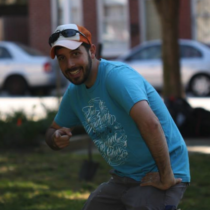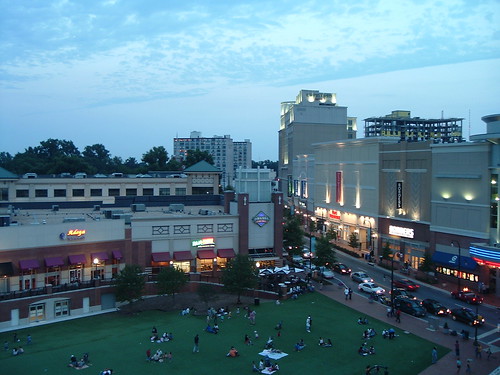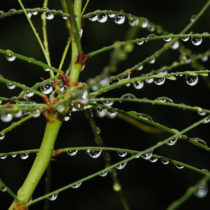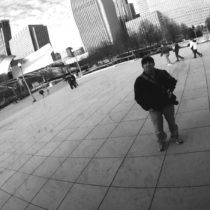Landscape Architecture for Landscape Architects › Forums › DETAILS & MATERIALS › Artificial or Real turf for public spaces?
- This topic has 1 reply, 13 voices, and was last updated 15 years, 4 months ago by
 Cliff See.
Cliff See.
-
AuthorPosts
-
July 18, 2010 at 12:39 am #168644
 Nick MitchellParticipant
Nick MitchellParticipantI recently submitted a design for a large public space, and my professor, being the client, preffered artificial turf for it cost benefits. I dont have any experience with either in large scale urban spaces. Could anybody shed some light on this, pros cons?
July 18, 2010 at 2:20 am #168667 Cliff SeeParticipant
Cliff SeeParticipanthi, i really enjoy the local football field near my place, after jogging i STRETCH out on the artificial grass… very comfortable! no mowing, or irrigation. maybe it should be in many more places (including yards).
the beauty of it bears fruit when you rest on the turf, all the while you know there arent bugs or soggy ground beneath you… it’s oppressive to nature in the best way, a zen-like quality.
of course it will collect dirt and debris over time… and since it is not natural, this debris cannot decompose, right? so there must be some way to remove the collected dirt every so often.
i hope you can use this material, … cliffJuly 18, 2010 at 12:58 pm #168666 Andrew Garulay, RLAParticipant
Andrew Garulay, RLAParticipantWhat is the purpose of the public space? What is the purpose of the turf?
It seems to me that a lot of public spaces that include turf are often built to provide natural materials as a getaway from buildings, pavement, and an artificial environment. Maybe that is not the case with this project. That break is enhanced by more use of living material and starker contrast from the manufactured environment.
What are your stated goals and objectives for this project? Do they support the professor’s preference or do they support yours? If they support yours, you should tell him that while you respect his preference, it does not support the goals of this particular project. If you wrote up goals and objectives that you did not follow, you may want to either rethink what you did or pay more attention to writing up goals and objectives (I know that when I was in school you could have made a rubber stamp with the latest buzz words and passed it around the studio for goals and objectives half of the time).
It is not so much what the pros and cons of natural turf vs. artificial are so much as whether they support the criteria of the project or not. Are you filling space or are you fulfilling an experience?
My guess is that the professor is pressing you to have a reason for everything that you do and will respect you for a well reasoned response. The design process should be front loaded with clear goals and objectives that you have either received directly or have hashed out through researching the project or through client meetings. Choices of materials are further down the road and should meet those earlier established values. Sometimes they clearly do or don’t, other times it is more subtle, but either way, you should know why you selected them and therefore have the ability to justify the choice.
One of the things that we develop through school is our ability to understand the reasoning behind why we do things instead of just accepting it as just feeling like it was the right thing to do. You believed that natural turf was the right thing to use. Now you have to consciously figure out what your subconscious already processed. The difference between a professional (Landscape Architect) and an amatuer is that we have become trained to know why we do things rather than acting on instinct. It takes the entire four or five years of school to get us there, but that is really what the whole thing is all about.
We can apply creativity to rational thought, but what sets us apart is that we make our design decisions based on rational thought. Ask yourself “why” every time you make any decision in a design. If you dig hard enough, you’ll either find it or you will change your decision. Either way, you can confidently move forward and defend your design.
July 18, 2010 at 1:31 pm #168665 Nick MitchellParticipant
Nick MitchellParticipantI definitely agree. My professor and I debated on the pros and cons, and I had my reason and he had his. The program for this project asked for a cost effective and durable space, which lead me to the artificial turf. I wanted more of an oasis feel from the city as you described. The project I am referring to is the Daley Plaza in Chicago, you can see my plan and description on my profile. I was just wandering what kind of personal experiences people have had on these materials; emotions, maintenance, aesthetics… etc.
July 18, 2010 at 3:19 pm #168664 Wyatt Thompson, PLAParticipant
Wyatt Thompson, PLAParticipantThe company I work for does a lot of turf sports fields. Typically our engineers spec the products, but I’ve picked up a few things in conversations and plan reviews. Generally, the artificial turfs available on the market are vastly superior to the “astroturf” product that began it all. I’ve seen samples of some of the current lines and many of them are very close to grass in color and appearance. Texture is something that is difficult to replicate, but on the installations I’ve visited, the turf was not uncomfortable to sit on. There are obvious advantages that Cliff mentioned, plus it’s always green and has a fairly long life before replacement (20-25 +- years I believe, depending on the product). On the downside, turf I’ve seen is more expensive to install than seed or sod – the subsoil must be prepped and designed in a different way, and typically underdrains are required. Turf does require cleaning – typically a vacuum of some type to suck up debris. I’m not sure of the frequency required or cost for this. Hope that helps.
July 18, 2010 at 10:10 pm #168663 Kevin J. GaughanParticipant
Kevin J. GaughanParticipantI have actually seen a very good example of this in Silver Spring, MD. Although it was only a temporary installation, I think it was a huge success. The first time I saw it I was mortified, but then as I watched the people interact with the space (pretty much just a largerectangular patch of artificial turf with a little bit of slope) I became very intrigued by it. It had a large variety of user groups doing everything from picnicking to playing sports or just hanging out talking. Everyone seemed to love it, and as i started to consider it more compared to actual grass, it didnt seem like that bad of an idea. Grass is pretty much as impervious and sterile as artificial turf, plus artificial turf requires very limited maintenance. I have not been back there for a little bit, but I believe they have started the next phase of the project, so it is no longer there, but I thought it was a very successful experiment. Maybe some other Marylanders on the site have some pictures to share of it….I will look around to see if I have any.
July 18, 2010 at 10:14 pm #168662 Kevin J. GaughanParticipant
Kevin J. GaughanParticipantfound a couple pics online:
 July 18, 2010 at 10:42 pm #168661
July 18, 2010 at 10:42 pm #168661 Mitch HowardParticipant
Mitch HowardParticipantThere could be a huge discussion brewing here on the topic of artificial turf. Another one of many questions that needs to be asked is “what effect does artificial turf have on the health of the soil beneath the installation”? While it is true that most living turf-grass installations in large scale urban spaces cannot be called natural or environmentally sound, my understanding is that large-scale artificial turf installations create dead-zones in the soil beneath them. Any future soil remediation of these areas would be another large expense passed on to future stake holders. This may, or may not ever be an issue with your particular site, but intuition, not to mention professional creed, dictates a “stewardship” of the land. Does installing a large expanse of artificial turf by reason of immediate cost savings fit the definition?
Here is a great article (which quotes Kim Sorvig) from a Facilities Management advocacy group that offers options beyond the two obvious choices.http://www.fmlink.com/ProfResources/Sustainability/Articles/article…
I look forward to reading view-points from other land8 folk. One last thought…could your professor be testing your resolve by playing playing “devil’s advocate”?
July 19, 2010 at 12:27 am #168660 Nick MitchellParticipant
Nick MitchellParticipantits funny you mentioned that because I read about that in LAM a couple years ago and that is was one of the main reasons I decided to go with the artificial turf. I have not had the opportunity to visit it but from what I have read it seems like an excellent solution for the space.
July 19, 2010 at 12:29 am #168659 Mitch HowardParticipant
Mitch HowardParticipantAn added note…You will have an easier time accessing the above mentioned article by googling…
FACILITIES MANAGEMENT RESOURCES
SUSTAINABILITY
Natural Landscaping and Artificial Turf: Achieving Water Use and Pesticide Reduction
By Alex Wilson and Jessica BoehlandJuly 19, 2010 at 11:43 am #168658 Trace OneParticipant
Trace OneParticipanthttp://articles.latimes.com/2008/sep/04/business/fi-turf4
I believeJerry Brown just won this lawsuit, over artificial turf suppliers failing is disclose prohibitve amounts of lead in their turf.
I think artificial turf has been shown to promote some noxious types of bacteria, which gather in the sweat and detritus of the plastic and propagate, like MRSA. I think the texture of the ground also can lead to ruinous ligament injuries (it’s very hard) as well as nasty plastic burn in users who slide on the ground, like soccer players..
To me it seems unclean.
But there is no thing worse, as far as I am concerned, than the lawns of california. Unlike in the east, when you see lawn in califronia, you see a space that I have learned only screams “do NOT SIT down here!!!” – they are always wet, over-irrigated little nasty mold spots…
just my 2cJuly 21, 2010 at 3:15 pm #168657Pat S. Rosend
ParticipantThe correct industry term is Synthetic Turf.
July 21, 2010 at 3:16 pm #168656Pat S. Rosend
ParticipantI beleive concerns over Synthetic Turf are valid and should be investigated further, but I am not willing to throw out an entire product over a few very small studies.
It would be beneficial to see more and arger studies.
July 21, 2010 at 3:23 pm #168655Pat S. Rosend
ParticipantSythetic Turf fields currently have a standard 10 year life span. Sythetic Turf is more expensive to install but not as much as you might think.
For example a standard rectangle field with turf and irrigation runs about $800 k installed in our region (Mid-Atlantic)
A synthetic field runs around $1 mill.There are maintenenance savings, but not as much as you might think as the fields do need periodinc grooming etc.
The biggest gain in using synthetic turf is in the ability to use the field more. A turf field is done by mid summer and is limited in bad weatehr. Synthetic fields can be utilized virtually year round and in rainy weather thus increasing the capacity of the system using it. This is no small thing when the cost of land to build athletic facilities is so large.
July 21, 2010 at 7:22 pm #168654 Chris WhitisParticipant
Chris WhitisParticipantWe were in NYC in the spring and the plaza at 55 Water Street (Ken Smith) had a turf panel that was synthetic. The newer surfaces can fool you from a distance and can only tell its fake when you’re up close. I’m betting they chose it for maintenance and also growing conditions due to lack of solar exposure.
55 Water Street @ http://www.sitephocus.com
I’m interested if anyone else has heard this or not, but a local project that has proposed using this in a play park is going to have to irrigate or mist the entire synthetic area due to the high surface temperature from the sun of synthetic fields. I’m not familiar enough to know if this is a concern or not.
-
AuthorPosts
- You must be logged in to reply to this topic.


